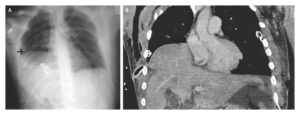Phymatous rosacea is uncommon. The most frequent phymatous manifestation is rhinophyma (known familiarly as “whiskey nose” or “rum blossom”).
In its severe forms (grade 3), rhinophyma is a disfiguring condition of the nose resulting from hyperplasia of both the sebaceous glands and the connective tissue.
Rhinophyma occurs much more often in men than in women (approximate ratio, 20:1),43 and a number of clinicopathologic variants have been described.
Although rhinophyma is often referred to as “end-stage rosacea,” it may occur in patients with few or no other features of rosacea.
The diagnosis is usually made on a clinical basis, but a biopsy may be necessary to distinguish atypical, or nodular, rhinophyma from lupus pernio (sarcoidosis of the nose); basal-cell, squamous-cell, and sebaceous carcinomas; angiosarcoma; and even nasal lymphoma.
Data from randomized trials of therapies for rhinophyma and long-term follow-up studies of recurrence rates are lacking. Clinical experience suggests that grades 2 and 3 rhinophyma respond well, at least initially, to surgical excision, electrosurgery, or carbon dioxide–laser therapy.
A case series of 30 patients who were treated with carbon dioxide lasers and followed for one to three years showed good cosmetic results in almost all the patients.

